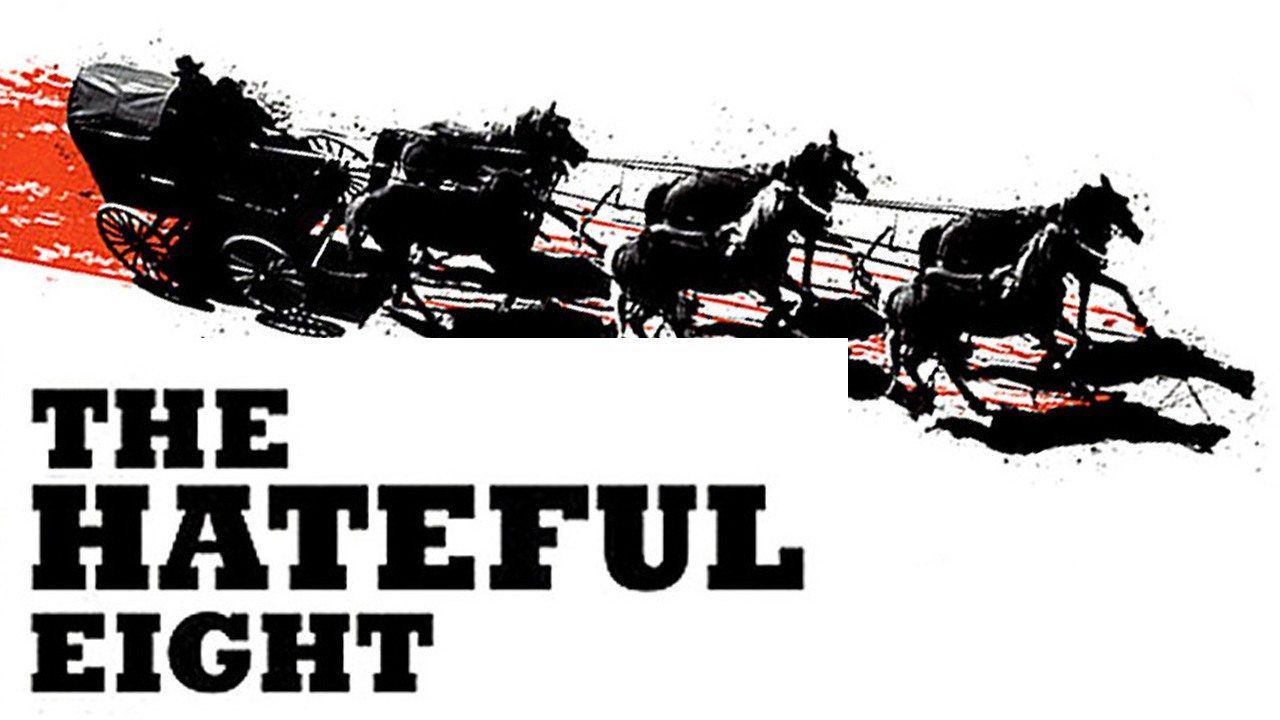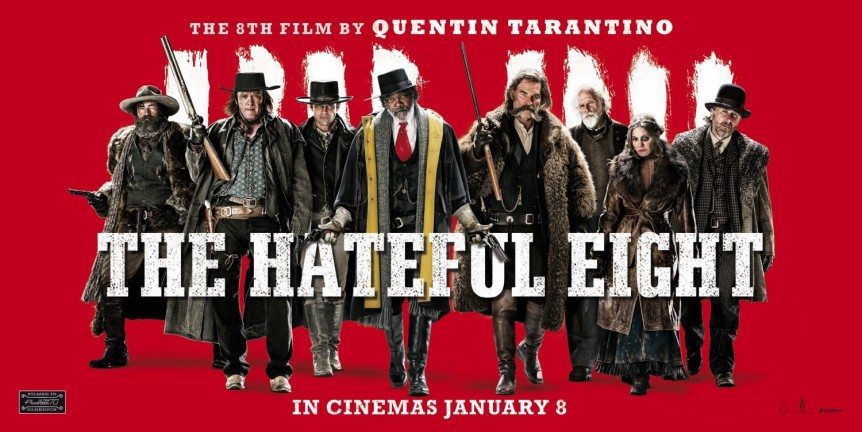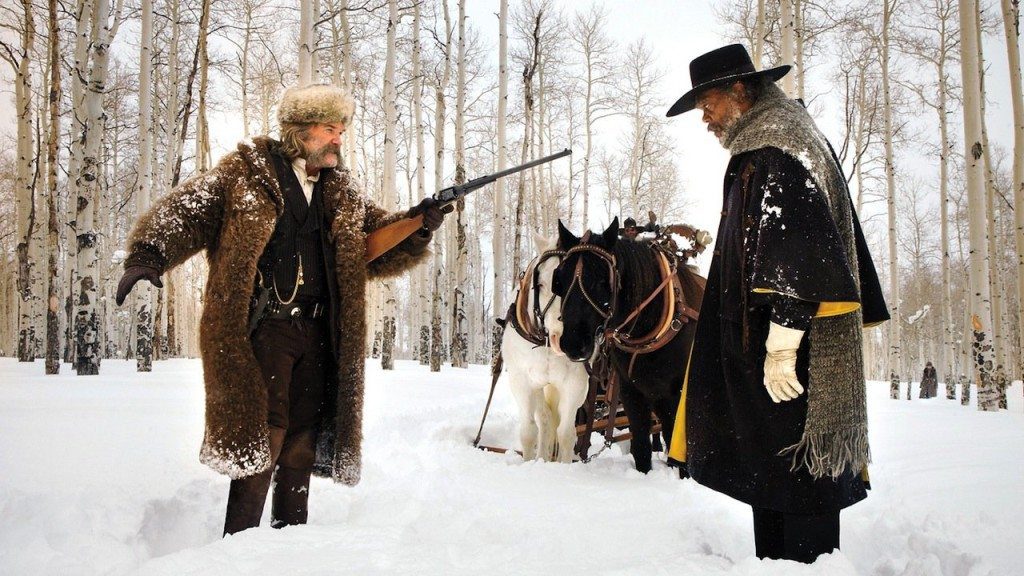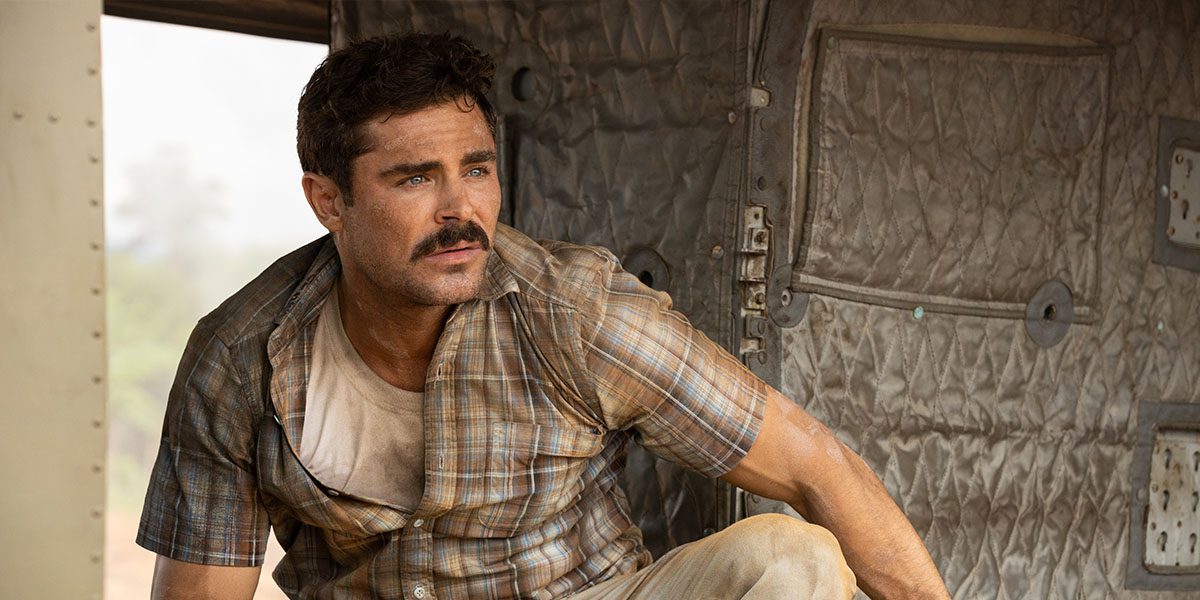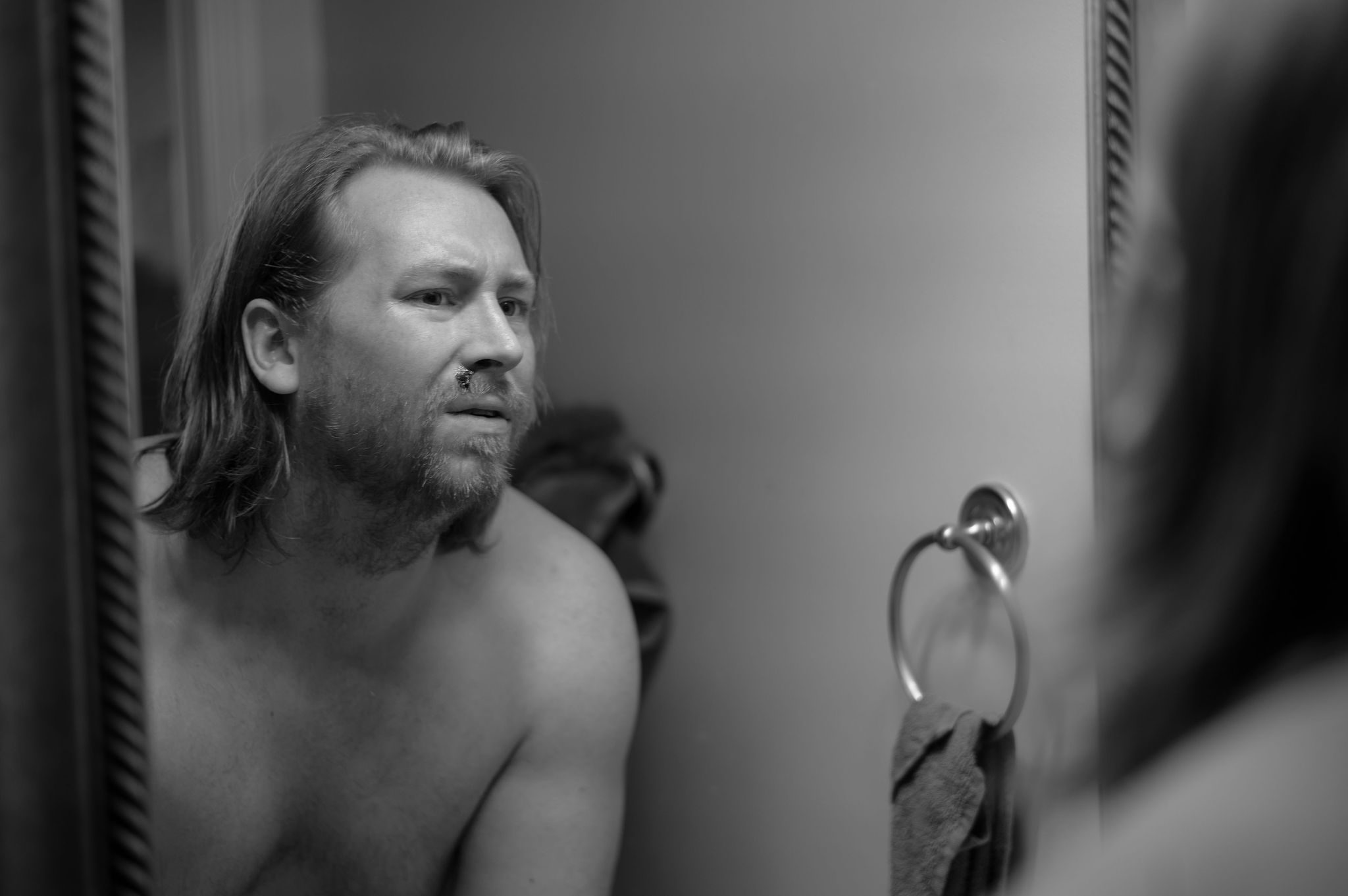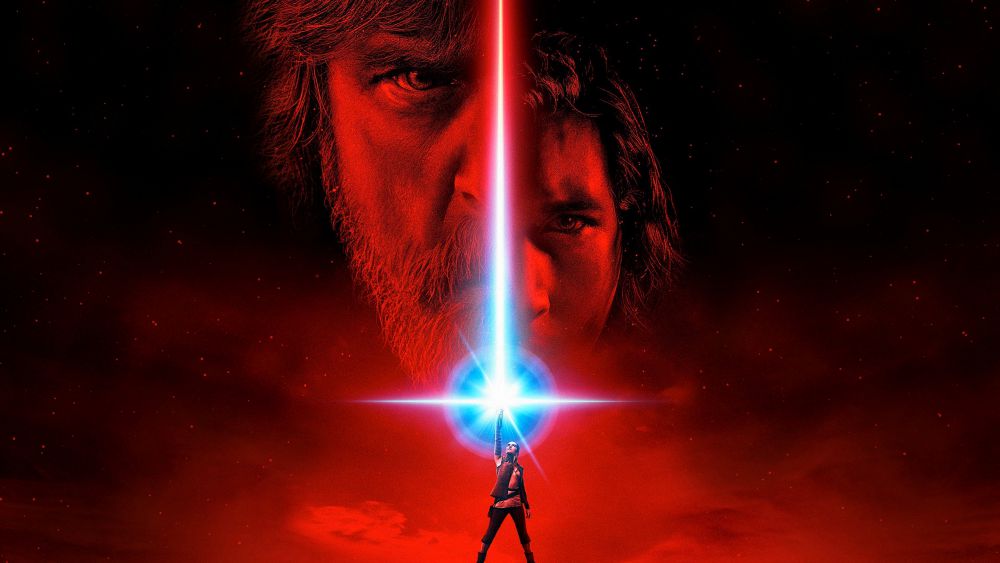Quentin Tarantino’s eighth film, a western that wasn’t a sequel to?Django Unchained,?focuses in on eight characters of ill repute who find themselves stuck in an isolated cabin in the midst of a snow storm. In true Tarantino fashion, the complexity of the characters will come to the forefront as bullets start flying, and sides are drawn. Who will be left standing when the smoke fades and the cards are all on the table?
The film opens as John “The Hangman” Ruth (Kurt Russell) violently transports the deadly outlaw Daisy Domergue (Jennifer Jason Leigh) via stagecoach, just ahead of a blizzard. Along the way to Minny’s Haberdashery, a stopgap station along the way to Red Rock where he’ll collect his bounty, Ruth picks up Major Marquis Warren (Samuel L. Jackson) and Chris “The Sherriff” Mannix (Walter Goggins). They arrive at Minny’s just as the storm catches them, where they find themselves trapped with several other violent men.
In the cabin, Bob “The Mexican” (Demian Birchir) tells them that Minny and her crew have left him in charge of the cabin, while fellow travelers, Confederate General Sandy Smithers (Bruce Dern), Oswaldo “The Hangman” Mobray (Tim Roth), and cowboy Joe Gage (Michael Madsen) are already there. Each of the men have weapons that Ruth goes out of his way to relieve them of, convinced that at least one of them has a connection to Domergue and plans to help her to freedom.
Like many of Tarantino films, there is a beauty, a poetry, to?The Hateful Eight.?There are few other films that have made such wonderful use of snow, showing the beauty and danger of a blizzard; the witty dialogue and banter nearly lends itself to ‘rap battle’ status as many of the characters wield their tongues like weapons. And there’s also Ennio Morricone’s (Sergio Leone films,?The Mission,?The Untouchables) score that wonderfully connects our emotions and thoughts throughout the film.
But, also like Tarantino’s other films, this is also a violent, gory, explosive film with gunplay and violence that ends horribly. Seriously, I imagine that Tarantino and George R.R. Martin meet over lattes to discuss how they can startle us by whacking a character just when we’ve gotten comfortable with him or her. Nothing is sacred (even the crucifix depicted in the film was ‘snowed under’), and nothing is untouchable.
Most Tarantino films wear me out. The never-ending stream of epithets, racism, and violence seems designed to push the viewer to some extreme reaction. [Vomiting in this one almost made me gag.] But I have to believe it’s all for a?purpose?in Tarantino’s mind, even if I (or others) don’t quite get what the connection is. For Tarantino, it’s all tied together, even if the loose ends are sometimes frayed.
In?The Hateful Eight, the action is broken into six chapters. The first four play out in “chronological” order, while the fifth flashes back to the moments prior to and concurrent with chapter one; the sixth chapter takes the plot to its conclusion. I’ve never felt the need to go and revisit a Tarantino film after seeing it the first time (probably due to oral and visual exhaustion) but it seems like there’s enough here to go back and check for marks along the way. Tarantino’s genius is in making the film tension-filled and suspense-filled; because all of the characters are knee-deep in their own “stuff,” we’re kept guessing about any conspiracies that might be in play.
While nothing that happens here will surprise you after the fact because it’s Tarantino, it’s still surprising! We’re exploring typical Quarantino territory, from racism, violence, greed, power, and relationships. You’ve got some ‘typical’ Tarantino actors like Jackson (sixth collaboration), Roth (four), and Madsen (four). His use of a female outlaw, and?the North/South conflict, make this a political/social commentary even with everything else that’s going on about bounty hunting and revenge. With Tarantino, you just never know what point he is going to make.
But… is it too much? Is Tarantino so focused on offending that he loses his story in all of the “stuff” added on? Is he so clear that this is all hyperbole that we shouldn’t critique the violence, the abuse, or the abundant use of the n-word? His dialogue set up against the backdrop of the Civil War (and the resulting discord that wasn’t suddenly ‘fixed’) makes it more like?Django?than say?Kill Bill?or?Pulp Fiction, but we’re still looking at a set up where every heart is corrupt, and death is just waiting for us all.
I’m always intent on finding out ‘the point’ of a film, and if I had to say what it was in?The Hateful Eight… I’d change my mind five times. As I left the theater, I was finally resolute that Tarantino showed how enemies could be friends when faced with a danger or foe that was strong enough to unite them. We all bleed red blood; we all have a tendency to bear our grudges and seek revenge whenever we believe we have the upper hand. But?those who live by the sword, die by it… right?
It seems like I read that somewhere before.
FeaturesFilmReviews
